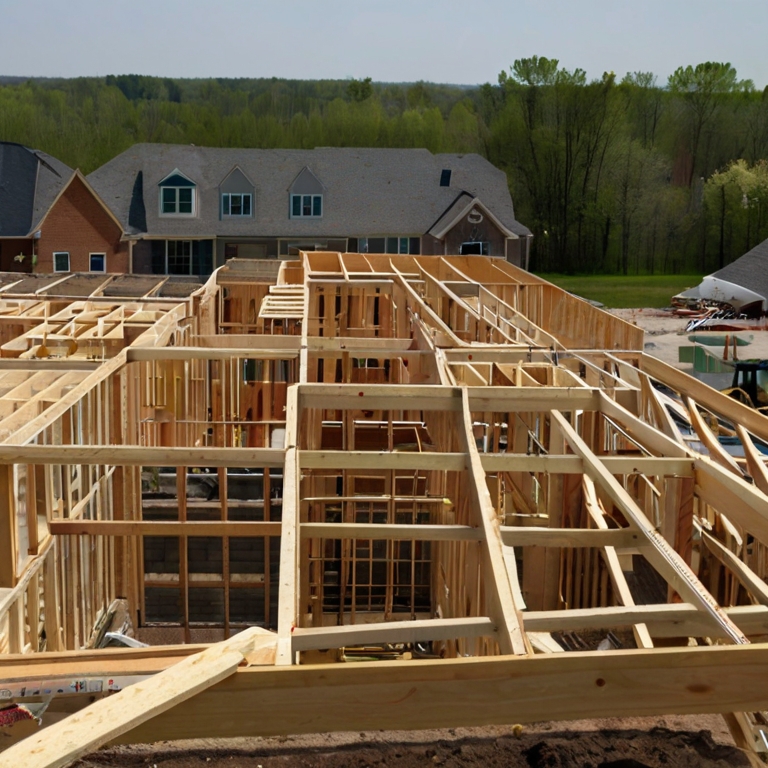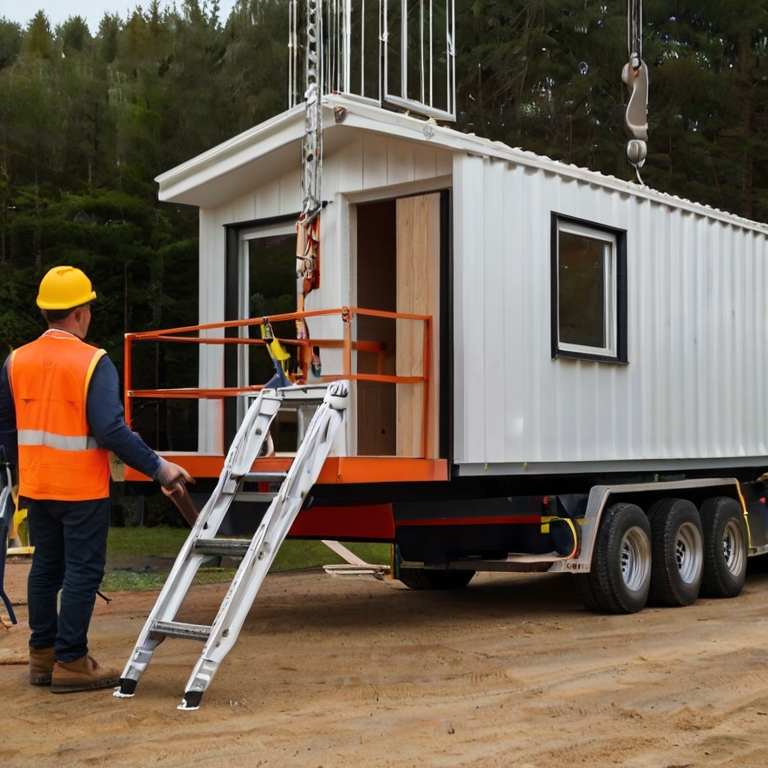As we navigate through Spring 2024, Canada’s housing supply dilemma remains at the forefront of economic and social challenges. A burgeoning population, driven by both natural growth and one of the world’s highest immigration rates, has intensified the demand for housing across the country. Yet, this demand finds itself increasingly mismatched with the supply, a predicament that has sent ripples through the fabric of Canadian cities and towns alike.

In this article, we dissect the current state of housing supply in Canada, shedding light on the nuances of housing starts, construction trends, and the multifaceted challenges that developers, policymakers, and citizens face. We’ll explore how government efforts and market responses are shaping the future of housing in Canada and what this means for affordability, availability, and the quality of living spaces.
Amid the backdrop of these discussions, it becomes clear that addressing Canada’s housing supply issue is not just about building more homes. It’s about crafting sustainable, inclusive, and innovative solutions that resonate with the needs of a diverse and growing population.
The State of Housing Supply in Canada
Housing Starts and Construction Trends
As we delve into the specifics of Canada’s housing supply, the data from the Spring 2024 Housing Supply Report by CMHC reveal a nuanced landscape. While the demand for housing continues to burgeon, fueled by relentless population growth, housing starts—a critical indicator of new housing supply—are projected to decline in 2024. This downtrend underscores a significant challenge: the need for more housing supply is at odds with the actual pace of construction.

In urban centers such as Vancouver, the narrative has been slightly different, with apartment construction, particularly rentals, reaching record highs in 2023. This surge reflects an acute response to an unprecedented level of rental demand. Yet, these efforts are overshadowed by the overarching trend of diminishing starts, hinting at a complex web of challenges constraining the expansion of Canada’s housing stock.
Challenges in Meeting Housing Demand
The pathway to increasing the housing supply in Canada is fraught with challenges. Rising costs stand as a formidable barrier, encompassing everything from materials to labor. The construction industry, in particular, faces a persistent labor shortage, exacerbating delays and pushing project timelines further. These challenges are compounded by regulatory hurdles that vary across provinces and municipalities, creating a patchwork of policies that developers must navigate.
The impact of these obstacles is multi-dimensional, affecting not only the pace of new construction but also the types of housing being built. For instance, the trend towards larger project sizes has led to extended construction timelines, further straining the supply pipeline.
Government Efforts and Market Responses
Policy Measures and Financial Programs

In response to the housing supply challenge, the Canadian government has launched several initiatives aimed at stimulating construction, particularly in the rental housing segment. Programs such as the Rental Construction Financing Initiative and the elimination of GST on new rental construction are designed to alleviate some of the financial burdens developers face. These measures, alongside others like Seed Funding and the introduction of Canada Mortgage Bonds, represent a multifaceted approach to bolstering housing development.
Private Sector and Development Trends
The private sector’s response to the housing supply dilemma has been characterized by a notable shift towards rental apartment construction. This pivot is largely driven by the soaring demand for rental units, as high housing prices and interest rates push homeownership out of reach for many Canadians. Despite these efforts, the construction industry’s challenges, from cost pressures to labor shortages, loom large, influencing both the volume and type of housing that can be brought to market.
Regional Highlights and Specific Challenges
Vancouver and Toronto: A Closer Look
The housing supply narrative in Vancouver and Toronto provides insight into the regional dynamics at play. Vancouver witnessed record-high housing starts in 2023, predominantly in the apartment sector, reflecting robust pre-sale activity and favorable borrowing rates secured before the rate hikes of 2023. In contrast, Toronto’s housing starts, while also reaching significant levels, were marred by a slowdown in the latter half of the year, driven by rising construction costs and interest rates.

The Role of Population Growth and Immigration
Complicating Canada’s housing supply challenge is the role of population growth, significantly fueled by immigration. The need for millions of additional housing units by 2030 to accommodate this growth underscores the urgency of addressing the supply gap. Without a concerted effort to ramp up construction, the disparity between supply and demand is poised to widen, with profound implications for housing affordability and accessibility across the country.
Looking Ahead: Projections and the Path Forward
As we gaze into the future of Canada’s housing market, the challenges of today set the stage for the actions of tomorrow. The path forward, fraught with obstacles from financial to regulatory, demands a concerted effort from all stakeholders involved. Here, we explore the projections for housing supply in Canada and discuss potential strategies to navigate this complex landscape.
The Need for Innovative Solutions

To bridge the gap between the growing demand for housing and the constrained supply, innovative solutions are paramount. Collaboration across all levels of government, the private sector, and academia emerges as a crucial strategy. By fostering an environment conducive to innovation, Canada can unlock new avenues for housing development that are sustainable, affordable, and inclusive.
For instance, modular and prefabricated homes present an opportunity to streamline construction processes, reduce costs, and expedite the delivery of new housing units. Additionally, reimagining zoning laws to allow for greater density can unlock the potential of underutilized spaces within urban cores, facilitating the development of more housing where it’s needed most.
Government and Private Sector Synergy
The synergy between government initiatives and private sector endeavors is critical in addressing the housing supply challenge. While government programs provide the financial incentives and policy frameworks necessary to stimulate construction, the private sector’s innovation and efficiency are key to realizing these projects. Encouraging public-private partnerships, especially in the development of affordable housing, can leverage the strengths of both sectors to tackle the supply issue more effectively.
Future Projections and Market Trends
Looking ahead, the trajectory of Canada’s housing supply will be influenced by several factors, including interest rate movements, immigration policies, and the global economic landscape. While the demand for housing is expected to remain robust, particularly in urban centers, the ability of the construction industry to meet this demand will hinge on overcoming the current challenges. Projections suggest that without a significant increase in housing starts, particularly in the affordable and rental segments, the gap between supply and demand will continue to widen, exacerbating affordability issues.

Conclusion – 2034 and Beyond
The state of housing supply in Canada is at a critical juncture. As the country grapples with the challenges of rising costs, labor shortages, and regulatory complexities, the need for comprehensive and innovative solutions has never been more apparent. The government’s efforts, in tandem with the private sector’s response, lay the groundwork for addressing the housing supply dilemma. However, the path forward requires a continued focus on collaboration, innovation, and a willingness to explore new models of housing development.
As Canada moves towards 2034 and beyond, the lessons learned during this period of housing supply challenges will undoubtedly shape the future of housing in the country. It is through the collective efforts of all stakeholders that Canada can hope to build a housing market that is not only robust but also accessible and affordable for all its residents.
